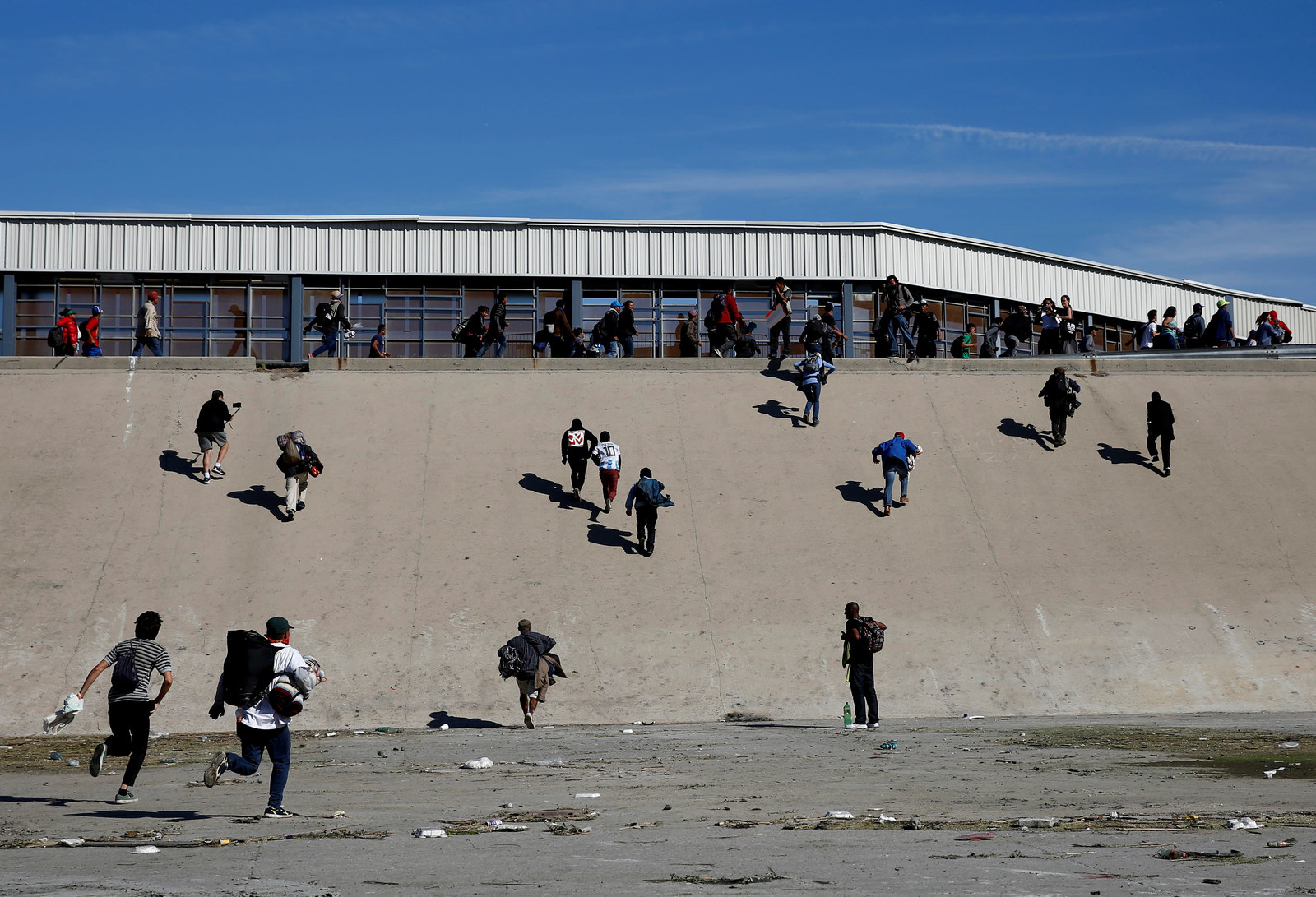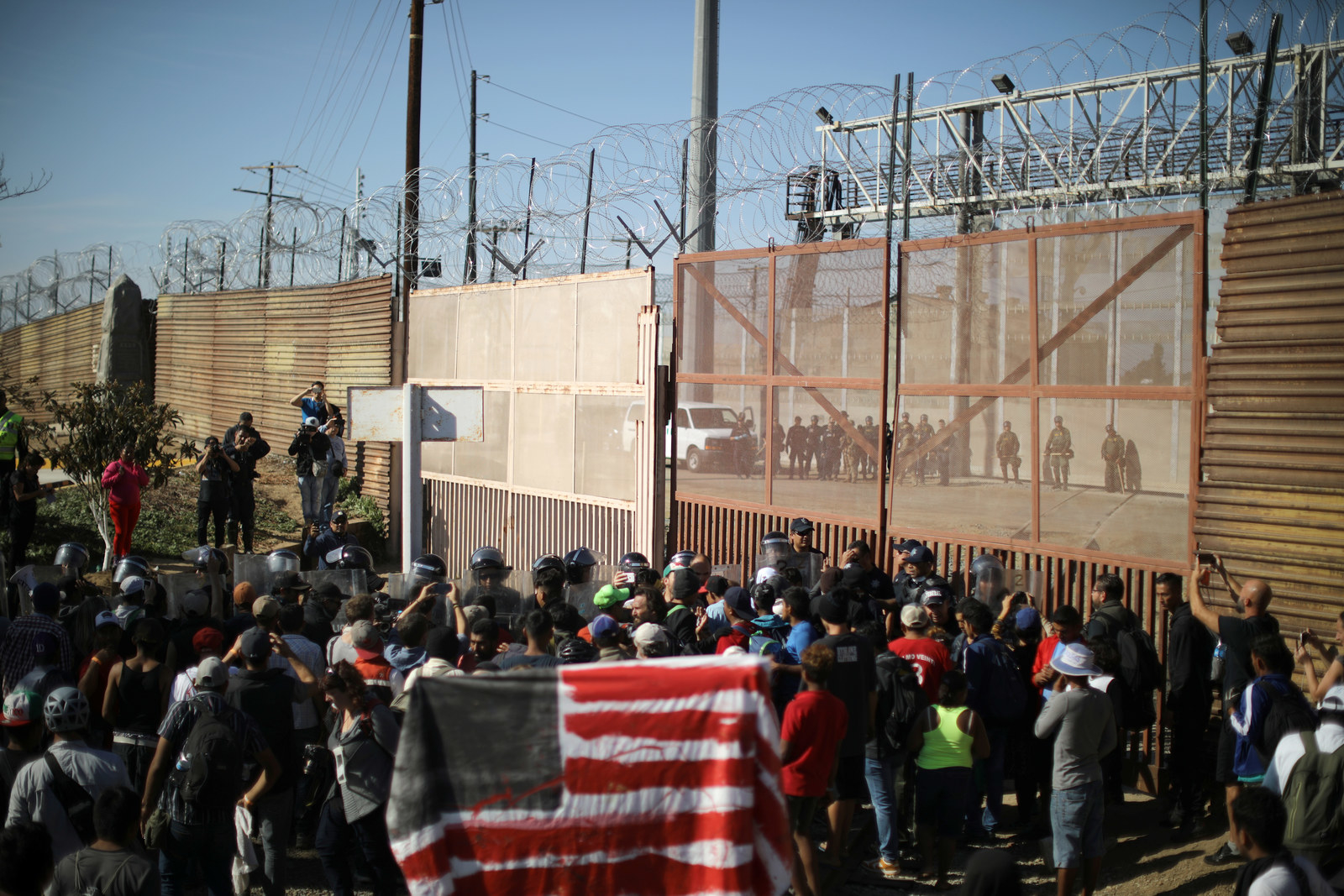Asylum denials jump; immigration judges’ discretion attacked
MEXICO CITY, Dec. 10 (UPI) — New data about the number of asylum applications granted by the United States this year show how the Trump administration has dramatically narrowed asylum granted to people fleeing persecution in their home countries — though significantly more Central Americans have been admitted over the past decade.
“Asylum acceptance rates are at a 20-year low, and the recent TRAC data confirms that,” said Sarah Pierce, policy analyst for the non-partisan and independent Migration Policy Institute, referring to data from the Transactional Records Access Clearinghouse.
For fiscal 2018, TRAC’s statistics show immigration judges denied 65 percent of asylum claims — up from 42 percent in 2017. There were 42,224 asylum cases decided in 2018, an 89 percent increase over the total number of cases decided in 2016.
Due to a backlog in the immigration system, some asylum seekers have been able to live in the United States for three years to five years while their claims are adjudicated, a situation the administration has tried to address by changing some rules and practices.
“This administration is trying to address people who are trying to take advantage of the system. But unfortunately this administration’s approach tends to punish asylum seekers rather than just specifically looking at those individuals who are taking advantage of the system,” Pierce said.
The administration’s broad approach to all asylum seekers has had the effect of narrowing asylum by increasing immigration judges’ workloads by setting quotas, ending discretionary decision making and rewriting immigration rules to deny relief to asylum seekers fleeing domestic and gang violence.
Immigration experts told UPI the administration’s changes to how immigration judges work has spiked a general increase in asylum denials.
Northern Triangle
There has been an increased flow of asylum seekers from Central American countries, particularly those from the Northern Triangle countries of Honduras, El Salvador and Guatemala.
And the fact that more of them are getting approved shows they are “sincere humanitarian migrants,” Pierce said.
A new TRAC tool shows Central Americans now fare better than in previous years. Salvadorans receive asylum in rates higher than Guatemalans or Hondurans. In 2004, Salvadorans’ asylum approval rate was 6 percent. In 2018, it rose to 23 percent. Guatemala’s grant rate in 2018 was 18 percent, the lowest of three countries, with Honduras at 20 percent.
Pierce said that changes in immigration law under the Obama administration help account for significant changes in asylum approval rates for people fleeing the Northern Triangle. Immigration judges over the past decade were more accepting of domestic and gang violence as grounds for asylum, with successes helping to develop case law.
The rise in asylum for Salvadorans has to do with direct violent threats, rather than domestic violence, which is a common claim among Guatemalan asylum seekers, or gang violence, common among Hondurans.
“The circumstantial evidence suggests El Salvador tends to have the most direct violent threats,” said Everard Meade said, director of the Trans-Border Institute at the University of San Diego.
Data comparing the Northern Triangle countries’ asylum seekers’ claims is hard to come by. However, Meade said in 2014 the United Nations High Commissioner for Refugees issued its report, “Children on the Run,” about unaccompanied Central American minors highlighting direct violence in El Salvador as a reason for flight. UNHCR interviewed almost 400 children with 66 percent of El Salvadorans reporting flight for threat of direct violence Guatemalans reported 20 percent, Hondurans at 44 percent.
But Central Americans’ asylum approvals might be a blip. Former Attorney General Jeff Sessions this year removed domestic violence and gang violence as grounds for asylum in immigration court proceedings.
“These private acts of violence claims are typically the ones we are seeing from the Northern Triangle,” Pierce said, “including El Salvador.”
Discretionary decision-making
The general picture, however, is that more people are failing to win asylum than ever before because the Trump administration has changed how judges work.
“The asylum decisions and denial data for fiscal year 2018 is really about discretionary relief that used to be available under [President Barack] Obama but is not available under [President Donald] Trump anymore,” Meade said.
Prior to Trump-Sessions, immigration judges used to employ a form of discretionary relief called administrative closure. This was a form of temporary protection against deportation that did not grant any permanent immigration status, unlike asylum, which is a pathway to citizenship.
“Immigration judges had people coming before them who had really compelling stories but those stories did not necessarily cleave close enough to the asylum standard to grant them asylum. But the judges really felt they did not want to return them to dangerous situations, either. They also felt they were people who were credible, who had told the truth, and so they were administratively closing their cases,” Meade said.
The practice of administrative closure ended this year with a Sessions memorandum.
“Administrative closure was a widespread practice and that is exactly what explains how the denial rate can go up so dramatically without the grant rate going down. Actually, the grant rate has gone up. In defense of the institutions, the modest increase in the grant rates suggest people have some really good asylum claims,” Meade said.
The situation in El Paso
Carlos Spector, a veteran El Paso immigration lawyer, said that although the asylum rate has increased nationwide, there is little evidence of successful asylum claims in El Paso’s immigration court.
“This year, I have lost some asylum cases that had really compelling claims,” Spector said, adding that 98 percent of his clients are Mexican.
Mexicans generally do not fare well in immigration court. In 2018, 14.5 percent of Mexican asylum seekers received asylum. Part of the reason is that immigration judges were administratively closing cases, protecting from deportation but stopping short of permanent relief.
For 2018, the latest TRAC data reveal El Paso’s immigration judges reviewed 297 cases, granting asylum 47 times. In 2017, they reviewed 148 cases and granted asylum 12 times. These low asylum rates, some of the lowest in the nation, mean El Paso’s immigration judges have a reputation for enforcing law and order, Spector said.
“I’ve been tracking asylum cases of Mexican nationals for the past few years and it is more or less the same rate along the border from San Diego to Brownsville,” Spector said.
“Because we are on the border and these judges are political appointees and these judges do understand the government’s mandate of holding or guarding the border and they take that law enforcement approach,” Spector said, “the denials are much, much higher on the U.S.-Mexico border, and they always have been.”
TRAC compiled asylum approval and denial statistics for fiscal year 2018, the first full year of Trump’s presidency, based on Freedom Of Information Act requests to the Justice Department’s Executive Office of Immigration Review, the agency charged with adjudicating defensive asylum claims in immigration court.
Photoby Ariana Drehsler/UPI : Jose Hernández, 17, styles his hair at El Barretal shelter in Tijuana, Mexico, on Dec. 9, 2018.
Just as I have been saying all along! The Trump Administration’s claim that low asylum approval rates indicate the system is being “gamed” by applicants is a bogus cover up. Even taken at “face value,” a 20-25% chance of being granted asylum hardly shows a system being “gamed.” At most, it shows that Immigration Judges are applying a much more restrictive standard than Asylum Officers considering “credible fear” claims at the border. Far from being “gaming,” that would be consistent with (although not necessarily required by) an intentionally much more generous standard for getting a fair adjudication in a removal hearing (“passing credible fear”) than for actually achieving relief (“a favorable order from an Immigration Judge after a full merits hearing”).
This all adds up to what appears to me to be a significant “cover up” of politicized wrong-doing and a mass denial of Due Process orchestrated by the Administration through the Department of Justice.
Why are the Administration, DHS, and DOJ so afraid of giving asylum applicants fair access to lawyers, time to prepare and document their cases, and timely fair hearings before impartial quasi-judicial adjudicators whose sole focus is getting the right substantive result, rather than achieving some type of assembly line enforcement-related “production quotas?”
Why waste time on “gimmicks” — most of which eventually prove to be illegal, ineffective, or both — rather than concentrating on getting to the merits of these cases in a timely manner and “letting the chips fall where they may.”
Surely, among a largely artificially created 1.1 million case “backlog” there are hundreds of thousands of cases that could be “administratively closed” as an exercise of prosecutorial discretion to allow more recently arrived cases to be timely heard without increasing backlogs or creating further wasteful “Aimless Docket Reshuffling.”
Eventually, the “mask will be ripped off” what’s really happening in our U.S. Immigration Court system. When that happens, the results could be ugly and damaging to the reputations of those orchestrating and enabling what certainly appears to be a disgraceful and intentional miscarriage of justice!























